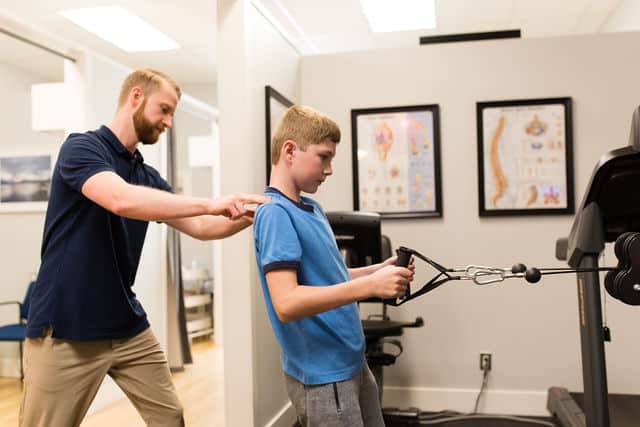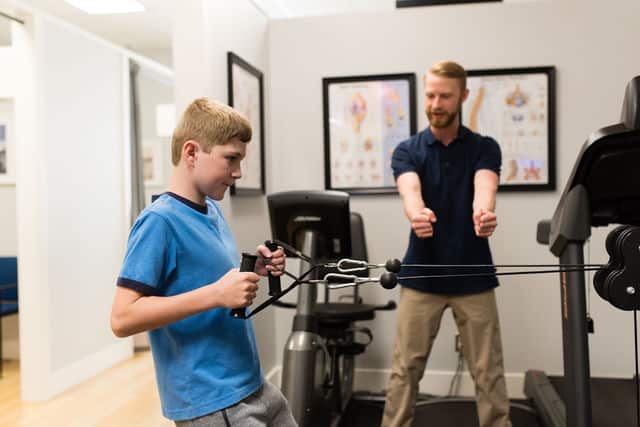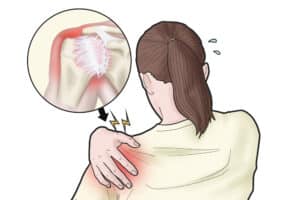Kinesiology (or human kinetics) can be broadly defined as the study of human movement. This covers a wide range of subtopics, such as motor development throughout different stages of life, athletic training, physical rehabilitation following an injury, and many more.
The British Columbia Association of Kinesiologists (BCAK) offers a more detailed definition of kinesiology, which is as follows:
“Kinesiology is the scientific study of human movement, performance and function, and applies the sciences of anatomy, physiology, biomechanics, and motor learning (neuroscience). Kinesiologists utilize science-based approaches, research and assessment to aid in the enhancement of human performance and to assist in the prevention or rehabilitation of injury and other physiological conditions.”
What Are Kinesiologists?
Given the wide scope of kinesiology, practitioners of the discipline (who are typically referred to as kinesiologists) can also be found in a variety of different professional roles. However, a major goal across all of these roles is to assist people in improving their understanding of movement and/or their ability to move effectively.
In British Columbia, the majority of kinesiologists work in helping people recover physically from an injury, such as a strain or sprain that has occurred from participating in sports or being involved in a motor vehicle accident (MVA). In the case of MVAs, as long as sessions have been approved by ICBC they will fully fund sessions with a kinesiologist.
Beyond injury rehabilitation, kinesiologists can also be involved in health promotion, teaching, coaching, personal training/strength and conditioning, ergonomics, and a handful of other roles.
How Does Kinesiology Work?
How kinesiology works depends on the context. In the cases of one-on-one personal training and injury rehabilitation, which will be the focus of the remainder of this blog, kinesiology helps people through three major means:
- Active treatment
- Passive treatment
- Education
Active Treatment
For most kinesiologists, the greatest emphasis is placed on active-based treatments. This involves teaching clients different exercises that they are then able to perform themselves. In one-on-one sessions, these exercises are tailored to the individual needs of each client.
For example, if a client is suffering from a muscle strain in their neck and shoulders that occurred as a result of an MVA, the kinesiologist will assess the need for various stretches and strengthening exercises for the individual’s neck and shoulders, prescribe the appropriate exercises, and then supervise the client performing them to make sure they are doing the exercises correctly.
In another case, if a client is looking for a program that is tailored to improving their core strength and balance, the kinesiologist can also create a customized program for this individual. For a core and balance training program, the following are some exercises that may be included:
- Pallof presses
- Single-leg balancing
- Bosu squats
- Front and side planks
- Bird dogs
- Tandem walking

Passive Treatment
Although it is not commonly a primary method of treatment used by kinesiologists, passive techniques are still occasionally employed in helping clients achieve their various fitness or rehabilitation goals.
Some examples of these passive techniques include assisted stretching, soft tissue release, therapeutic application of cold and heat, and various electrical therapy techniques. Electrical therapy techniques include the following:
- Laser therapy (low intensity only)
- Transcutaneous electric nerve stimulation (TENS)
- Ultrasound
- Interferential current therapy (IFC)
- Therapeutic magnetic resonance
- Muscle stimulation
It is important to note that not all kinesiologists will be able to utilize some of these techniques, such as the various electrical therapy techniques, as they require additional training that is usually not included in the required courses for an individual to become a kinesiologist. Furthermore, many of these techniques require expensive equipment which a kinesiologist may not have access to.
Education
Educating clients on their health and movement is another important component of the services that are offered by kinesiologists. This goes well beyond teaching proper form for various exercises, and addresses many more factors that influence healthy lifestyles and normal human movement. Important areas of education that are often addressed by kinesiologists include posture and gait, ergonomics, and nutrition.
Posture and Gait
Assessing posture and gait is an important part of many kinesiology services, as it provides a lot of valuable information about an individual’s muscles and joints. Discussions of posture generally include how to minimize the physical strain on the body in standing, sitting, and lying positions, whereas gait typically applies this same concept to walking and running. When issues are found that need to be addressed in order to help a client reach their goals, it then becomes important for the kinesiologist to educate the individual on the issues with their posture and/or gait and how to make improvements.
Ergonomics
Ergonomics, in the simplest sense, is the study of humans in their workplace. It’s focus is on modifying the workplace and the demands it places on people to reduce physical and mental strain on them; it seeks to reduce workplace injuries. Discussions of ergonomics will often overlap with those of posture. For example, a kinesiologist may make suggestions to a client on how to improve their seated posture when using a chair. They may then make some recommendations on how to improve the ergonomics of the desk space at work, such as modifying the height of the monitor or desk, changing to a more comfortable mouse and keyboard, or adding a stool beneath the desk for the feet to rest on.
Nutrition
Kinesiologists are able to offer general nutritional information and counselling services to clients. However, they are not able to actually design and prescribe a diet plan for a client to follow. In other words, they can help educate clients on nutrition, such as explaining what macronutrients and micronutrients are and the roles they play in our overall health and function. In the case where a specific diet plan is required, the client would need to seek out a more qualified professional, such as a dietitian.
Conclusion
Kinesiology covers a broad range of topics related to human health and movement, and thus the practitioners of kinesiology, or kinesiologists, also offer a wide range of services to the public.
References
https://bcak.bc.ca/documents/62/BCAK_Scope_of_Practice_Reserved_Acts_and_Delegation-with_guidelines_09-2015_IxfGGAQ.pdf








